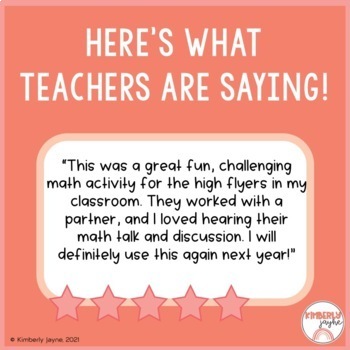Gifted & Talented Math Activities Logic Puzzle Extension Task Cards Vol 2 Bundle
- Zip
- Easel Activity
What educators are saying
Products in this Bundle (7)
showing 1-5 of 7 products
Description
48 math logic puzzles that engage students to develop fact fluency and problem solving using critical thinking skills. These logic puzzles are great for morning math routines, warm-ups, plenaries and centres. Math logic puzzles are the perfect activity to use as extension tasks for high ability and gifted and talented students.
- Level 1 includes problems with Addition Facts to 10. It would suit approximately grade one, but could be below or above depending on student ability.
- Level 2 includes Addition and Subtraction problems to 30. It would suit approximately grade two, but could be below or above depending on student ability.
- Level 3 includes Addition and Subtraction problems to 30 and Multiplication up to 12 x Tables. It would suit approximately grade three, but could be below or above depending on student ability.
- Level 4 includes Addition and Subtraction problems to 30 and Multiplication beyond 12 x Tables. It would suit approximately grade four, but could be below or above depending on student ability.
- Level 5 includes problems with 3 numbers, Addition and Subtraction problems to 30 and Multiplication beyond 12 x Tables. Students need knowledge of BIMDAS, PEDMAS, BODMAS ect. It would suit approximately grade five, but could be below or above depending on student ability.
- Level 6 includes complex problems using Addition, Subtraction problems and Multiplication beyond 12 x Tables. Students need knowledge of BIMDAS, PEDMAS, BODMAS ect. It would suit approximately grade six, but could be below or above depending on student ability.
I use these in Math Extension classes for Gifted and Talented students.
How Can it be Used?
Students can complete tasks in the classroom or from home for distance learning. They can also be used for warm-ups, plenaries, independent work or extension work.
What Will I Receive?
- A powerpoint version for whole class activities.
- Task cards for early finishers, independent work, extension tasks ect.
- Answer key for each question.
Let's Connect





